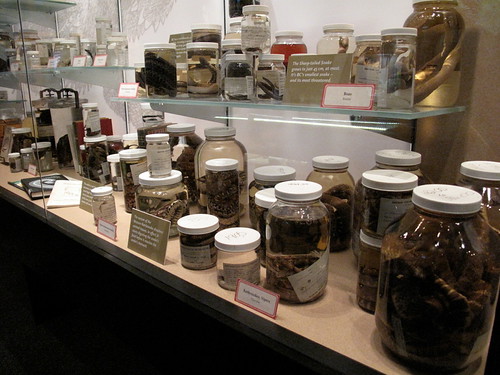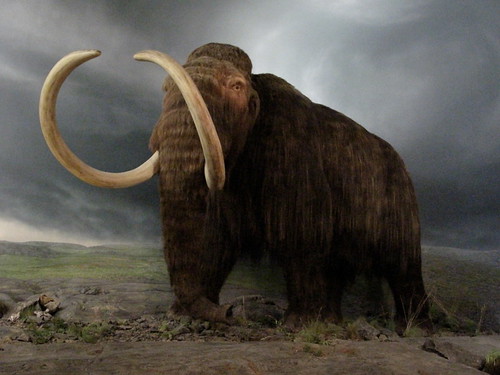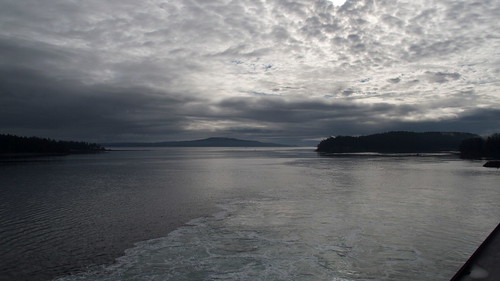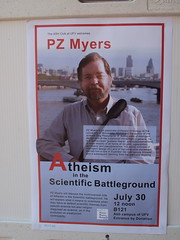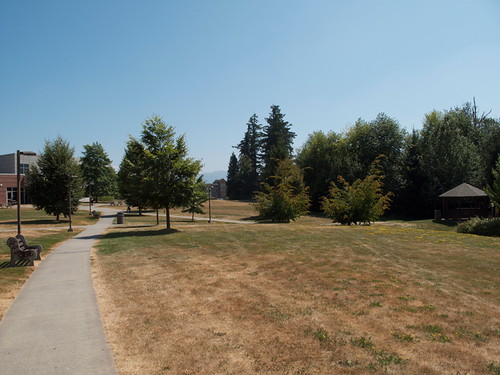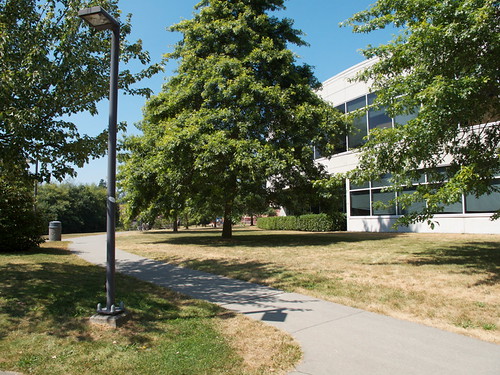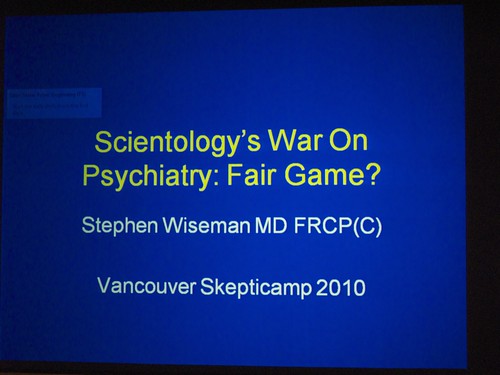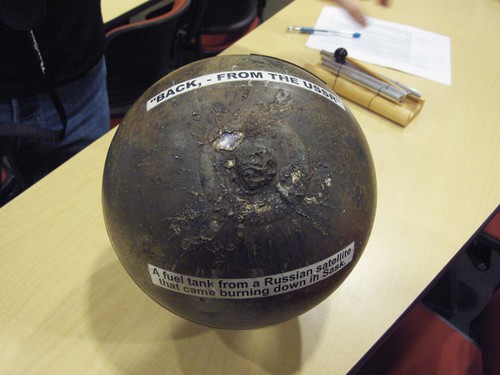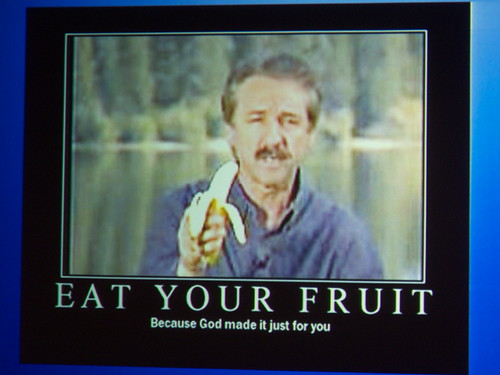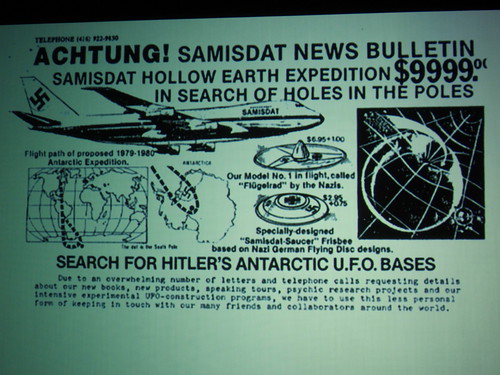As I said in my previous post, during my recent trip to Victoria I went on a ghost walking tour. It was fairly entertaining (our guide was quite a good storyteller), and I learned quite a bit about the history of Victoria, though of course it didn’t convince me that ghosts are real.
Starting Out
We started out near the harbour. Our guide—an older gentleman with a nice hat and a cane topped by a silver skull–got the ball rolling by asking, “What are ghosts?” He went on for a bit about how ghosts are energy, and the law of conservation of energy says they never go away, so we’re surrounded by ghostly energy all the time. Sometimes we see ghosts, sometimes we hear them, or feel a cold breeze, or something. And anytime you don’t know exactly where some random sensation comes from, you should ditch logic and consider the supernatural. Seriously, this was a textbook Argument from Ignorance.
Sigh. I guess I expected the bullshit pseudoscience and broken logic, but this wasn’t really getting me in the mood. I wanted gory tales of death and dismemberment and ghostly torment, dammit! Everybody else seemed to be eating it up, though, especially once he gave us instructions on sensing ghostly energy with the palm of our hands. The trick is to rub the thumb on the opposite palm quickly (do this with both hands), then sort of feel around, or slowly put both hands together, and if you feel a tingling or prickling it’s totally that you’re sensing your own energy. No other possible explanation!
Top
The Empress Hotel
Anyway, on to the ghost stories! Our first stop was on the harbour, in front of the Empress Hotel. The Empress, dontcha know, is one seriously haunted hotel.
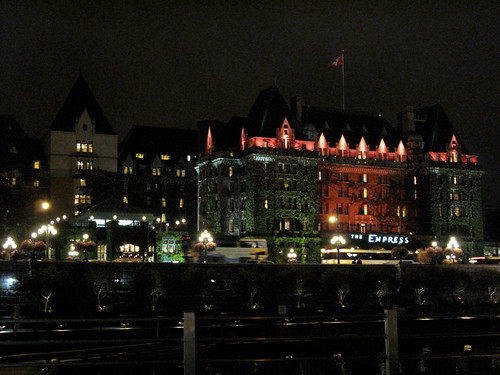
Apparently almost every room and corridor has a story attached to it, but our guide focused on two. First, the eighth (and topmost) floor of the West tower is haunted. Apparently, in the 60’s when that whole wing was under construction, a workman was up in the unfinished 8th floor and saw weird moving shadows, of a body swinging back and forth, but there was nobody there! The man was scared out of his gourd, and immediately quit. Further investigation revealed that a worker had hanged himself there about a year (I think) previously, but management had hushed up the whole thing so as not to scare away employees or guests.
Our guide claims to have worked at the Empress during the 60’s, but got the story second-hand through another employee; he never spoke to the worker who saw (or claimed to see) the apparition. Maybe there never was such a worker. Maybe the whole story is just urban legend. Who knows? This happened 45 years ago, and the top floor (supposedly) remained vacant or unfinished since then. 10 years ago they converted the floor to luxury suites. I don’t remember if those suites are said to be particularly haunted. But they probably are.
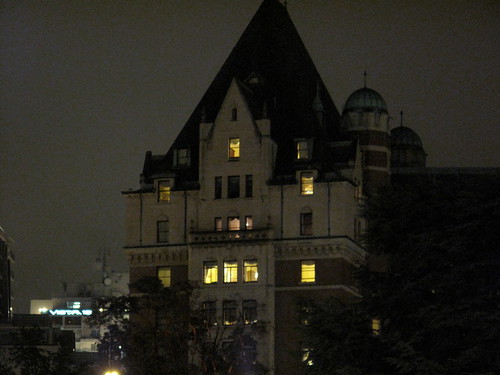
He also told us about a ghostly old woman who haunts the 6th floor of the same wing. You’ll hear a knock at the door, and open to an old lady in pajamas, who seems lost and confused. You try to help her find her room, and she leads you to the elevator. Then about that point, she vanishes. The story goes that she was a winter guest at the hotel many years ago, who simply died of natural causes. Her spirit stayed in the room, but got brutally evicted when that room was torn out to make room for the elevators. Now she wanders around lost, unable to rest because ghosts don’t like change.
Top
Burial Boxes and Floating Heads
Moving a little bit up the harbour, the guide pointed out the Inn at Laurel Point, clearly visible across the bay at night with its green neon “L” sign. This is the setting of the next story. The Songhees people (the Nation whose traditional territory includes the Victoria area) have a custom of burying important people in boxes either placed high up in trees, or buried in the ground. One such burial site was at Laurel Point, but was torn up by an evil enterpreneur who built his house and shop on the desecrated site. Soon after, the shop went up in flames. The owner’s wife is said to have seen something emerge from the flames, but it’s not clear what. She got sick and died a few weeks later; the coroner’s verdict was that she “died of fright”.
The land was sold to William Pendray (one of the biggest industrialists in Victoria then) and a factory was built on the site. But a string of weird accidents and occurrences kept happening; Pendray’s son died when his horse spooked and threw him off and somehow his head was cut off by a cart wheel. Four years later, Pendray himself died while inspecting his factory when a pipe fell on his head. Pendray’s house is now part of Gatsby Mansion, an upscale little hotel right by Laurel Point. The spirits don’t try to kill people anymore, but it’s supposedly still haunted. If you stay in room #5, you will see two ghostly heads emerge from the walls and sort of circle each other. They may try to talk, but their words are impossible to make out. These heads are Pendray and son, haunting the places of their untimely deaths.
PS: the deaths of the Pendrays are documented fact, though I suspect details in the guide’s story are exaggerated. For example, all the sources on the Net mention only that Pendray Jr. was thrown from his horse.
PPS: there’s a simple way to disprove the haunting story. The guide said that anybody, even skeptics, will see these heads if they stay the night in room #5.
Top
Haunted Kitchen
Next stop: Nautical Nellie’s. The kitchen is said to be haunted, with various poltergeist-y activities: rattling cookware, occasionally thrown objects, that sort of thing. What’s odd is that there are no records of murders or violent deaths in that spot, which is usually an indicator of restless spirits.
The real (for certain values of “real”) story is this: back in the 1850’s, the spot was part of Fort Victoria, with the palisades, fur storehouses… and cannons. In 1846 those cannons were used to shoot at a chief’s house across the bay, whose subjects were hostile and needed to be intimidated; thankfully, nobody was home and nobody died. In 1853, Governor Douglas was coming into the harbour; as he rounded Laurel Point, the fort fired its cannons to greet him. Some guy (I forget his function, either a junior officer or civilian) was leaning too close to the cannon and didn’t hear the warning, and got his hand shot off. The story goes that Douglas saw this hand fly overhead, and the crew of his ship unsuccessfully tried to retrieve it.
It is apparently this hand that’s haunting Nautical Nellie’s kitchen.
Top
Waiting for the Flood
Right next door to Nautical Nellie’s is Red Fish Blue Fish, another fine seafood restaurant. It is also the former old Customs House, built in 1875 and still standing to this day. At the time, the customs house was generally hated by Victoria’s population because it was a symbol of broken promises. When BC joined Confederation in 1871 Victoria was promised a railway, but the terminus ended up in Vancouver instead. I’m not really clear how politicians expected the train to cross the water, but hey. Worse, the customs house took a cut from all the commerce coming into Victoria—and there was a lot—and sent it out to faraway Ottawa.
That’s not the ghost story, that was just a bit of history to put us in the mood. And honestly, as a tourist I do appreciate all these little tidbits of Victoria history. But here’s the ghost story:
Emily Carr (yes, that Emily Carr) was born in 1871, the same year BC became part of Canada, not far from where the customs house would be built. As a young child (it’s said) she hung out on the docks in this very spot by the customs house, listening to tall tales from an… uncle? family friend? I don’t remember and my notes aren’t clear. Anyway, there was one particular story she loved, of a great wave coming in from the sea and washing over the buildings. She’d spend hours at the window (of the customs house, apparently) watching out for this fantasy tidal wave. It’s said she’s there to this day. The guide pointed out one window on the ground floor of the customs house, where a ghostly image of the child Emily may sometimes be seen.
Carr died on March 2nd 1945, at the James Bay Inn, which at the time was operated as a hospital. It is said she still haunts room 115, where she died. I don’t remember what the guide said about apparitions in that rooms, but they’re probably not frightening. Incidentally, this means that Carr is haunting two places at the same time. This makes sense if you think of ghosts as echoes, projections, as opposed to disembodied consciousnesses, but the guide never brought that up—maybe hoping the group wouldn’t pick up on the apparent contradiction. I guess ghosts can be whatever you want them to be, and the more stories the better.
Top
The Steamship Valencia
We walked over to the north end of the wharf, and the guide related the sorry tale of the SS Valencia.
On January 22nd, 1906, the Valencia was coming in from San Francisco when she got lost in the fog, hit a reef near Pachena Point and ran aground. Though they were in sight of land, the waves and cold meant that few of the crew made it to shore to signal for help. Rescue ships could not approach the wreck but managed to pick up some survivors in lifeboats. On January 24th a large wave washed the wreck off the rocks, killing all remaining passengers on board. In all, out of the approximately 150 passengers and crew, only 37 men survived (and no women or children).
Since then, there have been a number of rumours and ghosts sightings of the Valencia or her dead crew. Sometimes the ship itself is seen reenacting its destruction; one time, a lifeboat is claimed to be found with skeletons on board but always disappears before an investigation can be mounted. According to the guide the Valencia “wants to be remembered”.
PS: interesting factoid, it seems the Valencia is the only ghost ship in the area.
Top
Cradles and Ley Lines
The supernatural isn’t all about suicides and tragic deaths. Some of it is positive. Songhees Point (opposite Laurel Point, and together with it forming the entrance to Victoria’s inner harbour) was known to the local people as “Place of the Cradle” or “Cradle-board.” This name came from the tradition of leaving infants’ cradles in that place as soon as they were old enough to walk, to give them luck and long life.
Then the guide went off on a tangent about Stonehenge; why is it there, out in the middle of nowhere? Turns out it aligns perfectly with other special landmarks, all the better to carry energy or something. Oh crap, I thought, he’s talking about ley lines.
Yes indeed. Did you know there’s a ley line in Victoria? It’s several city blocks wide (really) and about 5km long, stretching from Place-of-the-Cradle through Bastion Square, St. Andrew’s Cathedral, and ending at the 7th fairway of the Victoria Golf Course. No, really. Naturally, that fairway is haunted—by a woman who was murdered there, though my notes don’t have any juicy details.
I know what you’re thinking: do these places actually line up? Well, sure… as long as you accept that the ley line is “several blocks wide”. Songhees Point is almost exactly due west of Bastion Square. That might or might not be a problem, since the Square isn’t exactly aligned east-west, pointing more towards the Delta Victoria Inn. Likewise, St. Andrew’s is pretty much due east of Bastion Square, so those line up okay. But the golf course, and especially the 7th fairway (which I believe is at the southern end of the course, hugging the coastline), is way off. You’d really need to stretch to align that with the other 3 landmarks. The Oak Bay Marina is a much better fit, but I guess there aren’t any murder stories associated with it.
And really, in a city with such a rich history that kind of mystical math isn’t hard to do. Take a halfway regular street grid, a good mix of Native and colonial landmarks, give yourself enough leeway, and you’re good to go.
At this point we got away from the harbour and crossed into Bastion Square. The guide pointed out the Commerce Canoe, a recently-commissioned piece of art. It definitely looked like a reference to the old Songhees custom of burying their dead in canoes up in trees, but the guide hinted that there was more than that. The canoe, he said, pointed towards Laurel Point.
Part of another ley line? Did he get it confused with Songhees Point? Because the Commerce Canoe most definitely does not point towards Laurel Point, that’s too far south. As I remember it, and as my photo suggests, it’s pretty well aligned with the street, which means it points a bit north of due west.
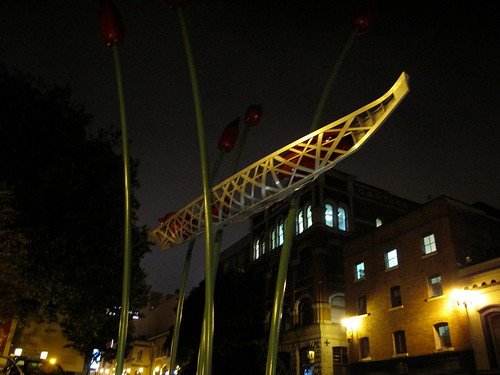
Top
The Hanging Judge
The website advertised “narrow streets and back alleys of Old Town”, but up to that point, there hadn’t been any back alleys. Now that was about to change! Our guide first pointed out the BC Maritime Museum, which is—you guessed it—haunted. Many people have reported feeling pressure (not just slight, but a strong shove), seeing a strange “burly man”… sorry, my notes aren’t too clear on this. Bottom line: haunted. He took us on a side alley, turning only a couple times but that was enough to completely lose me. We ended up in a little courtyard behind the museum (I think), and there we went inside.
It was a little side room, with a dozen or so chairs, and some weird decor I’ll get to in a moment. We sat down and he regaled us with some old tales of the museum from when it was a courthouse and gallows. There was a particularly nasty judge, lots of hangings, and since we’re talking criminals here, a lot of them didn’t have anyone to claim their body, so they were buried on the premises.
The room we were in was either designed to play up the “ghost” theme, or else it was co-rented by a coven of cheap gothy Wiccans. The only illumination came from a couple windows and a couple lamps with very dark lampshades. In one corner was a sort of Hallowe’en graveyard display, with cardboard tombstones and a sad plastic skeleton with a missing leg.
One girl sitting by herself at the very back seemed… kind of spaced out. She looked either still cold or really nervous about the whole ghost thing, and I kept waiting for her to scream that she saw a ghost. Honestly, I couldn’t help wondering if she was a plant, there to ramp up the spooked-out atmosphere and thus make everybody else more likely to “see” something.
Nobody did, unfortunately, even those that went into the very dark corner that was lousy with ghost energy—or so the guide said. You’d be likely to feel physical pressure or strong tingling on the palms of your hands that you just rubbed with your thumbs. Unfortunately, that was kind of a bust too.
We went back out into the (comparatively better-lit) night for the last leg of our trip.

Top
Helmcken Alley
The big attraction here was the haunted well. It seems that in the spring of 1858, during the Gold Rush, a group of miners were camping out in what’s now Helmcken Alley, just outside the site of Fort Victoria. One of them lost a ladle (according to my notes) down the well, and bribed a boy to retrieve it, but the boy fell and died. The well remained, but was eventually covered by subsequent buildings until 1975, when it was rediscovered, then nicely bricked up and made the focal point of the lobby. This apparently ticked off the boy’s spirit and now he causes… actually, I’m not sure what, my notes don’t say. But it’s not good. Apparently if you look at night, or take pictures without a flash, you see… something. Which I thought was very silly, because what you’re seeing is reflections on the glass outside the lobby.
The alley just outside the building is also said to be haunted. Long ago, chain gangs used to march back and forth down this alley. One of them was murdered by the guards. Some say you can hear the clang of chains. Sometimes.
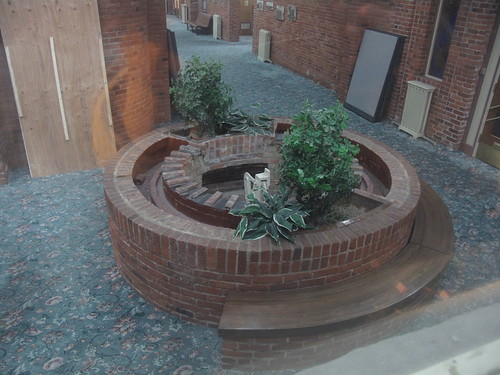
In Conclusion
Okay, so that was pretty entertaining, a nice way to spend an hour and a half in a city you’re not too familiar with. And aside from the supernatural stuff it was quite educational—gotta say, Victoria packed a lot of history in a mere century and a half. But for me, all the pseudo-scientific babble actually worked against suspending my disbelief, because I could spot the faulty logic. If it had been a straightforward “here’s what people are saying, here’s what they believe” tour, or a bunch of way over-the-top tales of tragic deaths and vengeful spirits, it would have been easier to swallow. Oh, well. So when I get another chance, I doubt I’ll go on another tour to try different routes.







